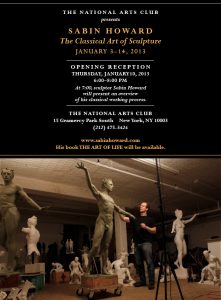

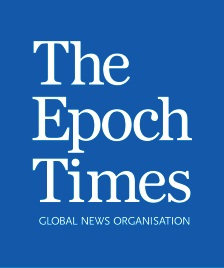
The Epoch Times: Saving the Eisenhower Monument
The Noted EPOCH TIMES published an article about the controversy surrounding architect Frank Gehry’s design for the Eisenhower monument, and my husband Sabin Howard’s classical proposal for it.
It’s a great piece that is aptly summarized by its subtitle: “While modern design is stalled, classical vision is put forward.”
“It should not be first about the artist, which it is for Gehry, as in, ‘Look there’s Gehry’s memorial.’ Most people do not know the names of the architects or sculptors of the world’s renowned monuments but they do experience those artists’ profound hopes and aims,” wrote painter Patrick Connors.
Power and Simplicity
Last week, classical sculptor Sabin Howard made public his concept for a more traditional monument that focuses, with power and simplicity, on Eisenhower.
He said he originally put forward the plan in the summer at the request of Gehry himself but was misled about it being used, and it was eventually ignored.
Raised in both Italy and New York, Howard is an accomplished sculptor of 30 years who sees himself carrying on the traditions of great masters like Michelangelo. He knew what was wrong with the current memorial design as soon as he laid eyes on it.
“When I saw the memorial models, my heart sank. The project was trying to reinvent the wheel with newness, and it was missing the point entirely. Components were stiff and compartmentalized like a natural history museum exhibit. There was no focal point, but a lot of elements that did not work together to deliver a unified visual message,” Howard wrote in his blog on Dec. 7.
Instead of having 80-foot metal tapestries dominate the work, Howard suggests the statues of Eisenhower with his troops be changed into an 18-foot-by-11-foot relief and be reworked to show a clear sense of hierarchy and narrative.
“Eisenhower would be sculpted in the foreground in high relief. … The troops would be situated farther away, smaller, and in lower relief. Eisenhower would not only stand out as more important, he would also be more luminous. He would spatially project out more and catch more light,” wrote Howard. “He would be part of the men, and he would also stand out as their leader.”
Read the article here.
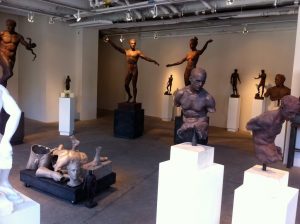
Sabin Howard: What happened with Frank Gehry on the Eisenhower Memorial
The Eisenhower Memorial is a public monument and so is held in public trust, which is being betrayed. This is an important story about how the public good can be sacrificed to individual egos.
My husband master sculptor Sabin Howard is telling it. He was caught up in what was quite probably an attempt to use him for his reputation as a renowned classical sculptor; he was unwittingly used as a ploy to temporarily appease those who are unhappy with Frank Gehry’s ill-conceived, ugly, and outrageously expensive plans for the Eisenhower memorial.
Here are Sabin’s words:
Sabin Howard Sculpture: What happened with Frank Gehry on the Eisenhower …:
I received an email asking me to phone Gehry Partners ASAP. I was…deeply moved. It could not be an accident that I received this call so soon after my experience with the Lincoln memorial. I felt that I was in sync with my purpose in life. The sculptures that I would make would not only represent Eisenhower as a man of tremendous achievement, but would also represent our country at its best. I felt that I had spent almost thirty years, and tens of thousands of hours in my studio, to reach this moment. I had never followed the fads of the art world, but instead worked to create an art that was connected to the rich tradition of classical art, but had the dynamic, expansive energy of America. My art has always been a statement about our highest potential as human beings—about rising to the occasion.
On August 10th, I was flown to L.A. to see the project plans for the Eisenhower Memorial and to meet with Frank Gehry.
When I saw the memorial models, my heart sank. The project was trying to reinvent the wheel with newness, and it was missing the point entirely. Components were stiff and compartmentalized like a natural history museum exhibit. There was no focal point, but a lot of elements that did not work together to deliver a unified visual message.
How could I tell the famed Gehry that the design and sculpture of this project had to lead our world and to direct us towards our potential? The sculpture must serve as a focal point in a sacred space that transforms the viewer, just as Eisenhower transformed the world through his actions as a leader. Perhaps Gehry was unaware of what could be.
My first question to Gehry partners was: Did you bring me in to be your in-house sculptor, or are you asking me for my creative opinion and 30 years experience as a figurative sculptor? They replied that they were basically unhappy with their current design and that they wanted to know what I thought.
I was thrilled. I thought of the Lincoln Memorial and the sacred space with its elevated energy.
After lunch, we began the meeting with Mr. Gehry himself. I shared my thoughts.
I spoke of the need for a sense of hierarchy within the sculptures of Eisenhower surrounded by his troops. The format should be changed to a relief, in which Eisenhower is the dramatic focal point, which is accomplished in several ways. In a relief, the use of perspective creates depth, and ultimately scale, within the composition. Eisenhower would be sculpted in the foreground in high relief, almost in the round. The troops would be situated farther away, smaller, and in lower relief.
I stated in the meeting that the design had to become sacred, because of Eisenhower’s historical importance. Making the blocks vertical would lead visitors to look up, giving them an expansive feeling. They would also be able to read the writing about Eisenhower with a sense of elevation, because of the heightened perspective….
I was instructed to submit a proposal with numbers to procure funds for my work. I was specifically instructed to make the numbers adequate for my needs, that is, to raise them from my initial ballpark figures. I did so and submitted a document. I was told that they wanted me to get started right away, and they would get GSA to release funds the following week.
Several weeks passed. I waited with growing confusion, as I had been explicitly told that I was Mr. Gehry’s first choice. I submitted two more documents concerning pricing.
On November 16, I received a phone call from the team at Gehry Partners saying that, stylistically, I would not be selected for the project. I am puzzled.
Moreover, I am disappointed. I was inspired and excited to be able to use my talents to create a work to honor one of our greatest presidents. Needless to say, stylistically, my work would have been created in form and finish appropriate for a presidential memorial.
I was never given a chance to show my sculptural skills in an honest competition. Things were decided with the submission of paperwork, and perhaps, with behind-the-scenes political concerns in mind….
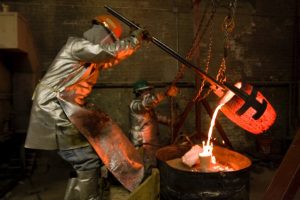
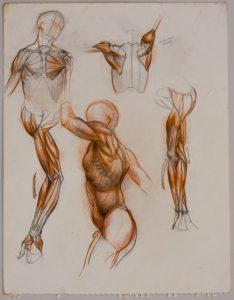
Sabin Howard | Visualarium : Learn to Draw: The Dynamic Figure
My husband classical figurative sculptor SABIN HOWARD is teaching a webinar. He’s an amazing draughtsman–he really knows the body. Check it out.
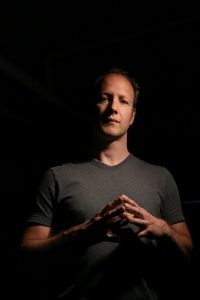
SABIN HOWARD on the radio CUIT tonight 10 PM
Catch my husband Sabin Howard on the radio
Sabin is talking about art, sculpture, modern classicism, drawing, anatomy–and what makes all that great!





